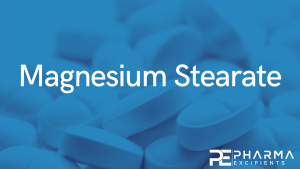Optimisation of Pharmaceutical Cocrystal Dissolution Performance through a Synergistic Precipitation Inhibition

Abstract
Objectives
Polymeric excipients play an important role in a cocrystal formulation to act as precipitation inhibitors to maximize the potential. Otherwise, a stable form of the parent drug will be recrystallized on the dissolving cocrystal surface and/or in the bulk solution during the cocrystal dissolution process, negating the solubility advantage. The objectives of this work were to investigate the potential of using combined polymers to maximise the dissolution performance of surface precipitation pharmaceutical cocrystals.
Methods
The dissolution performance of a highly soluble flufenamic acid and nicotinamide (FFA-NIC) cocrystal has been systematically studied with predissolved or powder mixed with a single polymer, including a surface precipitation inhibitor [i.e., copolymer of vinylpyrrolidone (60%) /vinyl acetate (40%) (PVP-VA)] and two bulk precipitation inhibitors [i.e., polyethylene glycol (PEG) and Soluplus (SLP)], or binary polymers combinations.
Results
A single polymer of PVP-VA prevented the FFA surface precipitation for an enhanced dissolution performance of FFA-NIC cocrystal. Unfortunately, it cannot sustain the supersaturated FFA concentration in the bulk solution. A combination of two polymers of PVP-VA and SLP has shown a synergistic inhibition effect to enhance the dissolution advantage of FFA-NIC cocrystal.
Conclusions
The dissolution of a cocrystal with surface precipitation of the parent drug can be described as: i) the cocrystal surface contacting the dissolution medium; ii) the cocrystal surface dissolving; iii) the parent drug precipitation on the dissolving surface; and iv) the parent drug particles redissolving. A combination of two types of polymers can be used to maximise the cocrystal performance in solution.
Download the full article as PDF here Optimisation of Pharmaceutical Cocrystal Dissolution Performance through a Synergistic Precipitation Inhibition
or read it here
Materials
Flufenamic acid form I (FFA I), nicotinamide (NIC) (≥ 99.5% purity), theophylline (TP) (≥ 99.5% purity), potassium dihydrogen phosphate (KH2PO4), and sodium hydroxide (NaOH) were purchased from Sigma- Aldrich (Dorset, UK). Copolymer of vinylpyrrolidone (60%) /vinyl acetate (40%) (PVP-VA, Plasdone™ S-630) was kindly donated by Ashland Inc. (Schaffhausen, Switzerland). Poly(ethylene glycol) (PEG) 4000 was purchased from Sigma-Aldrich (Dorset, UK). Soluplus® (SLP) was donated by BASF (Ludwigshafen, Germany). Methanol (HPLC grade) and acetonitrile (HPLC grade) were purchased from Fisher Scientific (Loughborough, UK) and used as received. Double distilled water (DDW) was generated from a bi-distiller (WSC044.MH3.7, Fistreem International Limited, Loughborough, UK) and used throughout the study.
Shi, K., Li, M. Optimisation of Pharmaceutical Cocrystal Dissolution Performance through a Synergistic Precipitation Inhibition. Pharm Res (2023). https://doi.org/10.1007/s11095-023-03532-x
Read more on Magnesium Stearate as a pharmaceutical excipient here:


